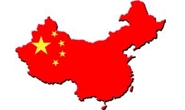Trade Cases

Trump's Tariffs on China Face Pushback
Written by Tim Triplett
August 13, 2019
Tariffs on some of the $300 billion in Chinese goods due to take effect on Sept. 1 have been pushed back until Dec. 15, and some items are likely to be removed from the tariff list entirely, as the Trump administration faces opposition from U.S. companies that claim the duties are hurting their businesses, The Wall Street Journal reported today.
Tariffs Hurt the Heartland – a national campaign opposed to the tariffs – is supported by many such companies in retail, tech, manufacturing and agriculture. American businesses and consumers paid $6 billion in tariffs in June 2019, one of the highest tariffed months in U.S. history, the group reported Aug. 7, citing Census Bureau data. The administration raised tariffs on $200 billion of Chinese goods from 10 to 25 percent in May.
It’s not the Chinese, but rather American businesses and consumers, that ultimately must pay the tariffs, the trade group argues. In total, American taxpayers have paid over $27 billion in extra import tariffs from the beginning of the trade war in 2018 through June of this year. Nearly 75 percent of those tariffs are due to the China 301 tariff actions. In fact, June saw a marked increase in tariff totals despite the fact that steel and aluminum tariffs on Canada and Mexico were removed.
“Americans are already paying record-high tariffs, and the biggest hit to consumers is still to come on Sept. 1,” said Tariffs Hurt the Heartland spokesman Jonathan Gold in a statement Aug. 7. “Taxing hardworking Americans isn’t doing a thing to address China’s trade abuses. Instead, these tariffs are costing American jobs, raising prices, hurting farmers and derailing U.S. economic growth. We continue to urge the administration to change course, and we call on Congress to get off the sidelines and take back its legislative authority on trade.”
For more information and to view the group’s “Tariff Tracker,” visit tariffshurt.com.

Tim Triplett
Read more from Tim TriplettLatest in Trade Cases

SMU Survey: Less support seen for Trump tariff policies
Meanwhile, an increasing number think it's too early to say whether the penalties are going to bring more manufacturing to the US.

CRU: USW seeks exclusion from Trump’s tariffs
The union is also urging stronger enforcement against countries such as China which break trade rules, and a coordinated Canada-US strategy to protect union jobs across the North America

Price on trade: A lot happened last week – and it wasn’t all about tariffs
Should foreign investment be allowed to reshape the American steel Industry? Not to be lost in the recent on-again-off-again tariff frenzy, Nippon Steel’s proposed takeover of U.S. Steel has also found itself in President Trump’s crosshairs when it comes to trade and industrial policy. Nippon Steel initially announced its nearly $15-billion bid for U.S. Steel […]

Trump signs executive order aimed at making US shipbuilding ‘great again’
President Trump on Wednesday signed an executive order meant to breathe new life into American shipbuilding and curb Chinese dominance in the sector.

Trump still against selling USS to Japanese firm: Report
Despite ordering a new review of Nippon Steel’s bid for U.S. Steel, President Trump said he is still against selling USS to a Japanese company, according to media reports.
